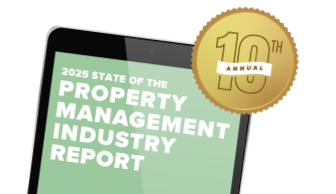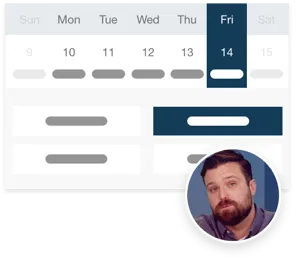Whether or not it’s your full-time job, managing rental properties—or even a single property—can quickly become overwhelming. Tracking payments, handling lease agreements, responding to tenant inquiries, and staying on top of maintenance requests often leads to a never-ending cycle. Rental leasing software can transform the way landlords manage their businesses, making tasks easier and faster to complete.
This guide explores how rental leasing software helps landlords make every leasing tasks more efficient and enhance tenant experiences. We’ll look at what features to look for in rental leasing software and how to test your options out before making a commitment.
Why Rental Leasing Software Is Becoming a Must-Have for Landlords
Many landlords start their journey by handling lease agreements, rent payments, and tenant applications manually. However, relying on this approach often results in inefficiencies, mistakes, and missed opportunities.
Manual management often leads to:
- Errors and inconsistencies: Documents can get lost, misplaced, or delayed, causing confusion and disputes with tenants.
- Time spent on administrative tasks: Without automation, landlords spend hours tracking payments, updating tenant records, or organizing lease agreements.
- Disorganization: Managing multiple properties and tenants can become a complex task without a single, centralized platform to track key details such as lease dates and payment histories.
Rental leasing software solves these problems by offering landlords a streamlined digital platform to manage leases, tenants, payments, and more. It automates many of the tedious tasks and brings order to property management. As a result, landlords can manage their properties more efficiently, whether they have one unit or a large portfolio.
Take a Deeper Dive: The Lease Management Software Playbook for Property Managers
Benefits of Using Rental Leasing Software
1. Simplifies Leasing Tasks
Rental leasing software can simplify many of the time-consuming tasks landlords face. Instead of manually drafting leases, collecting applications, or managing renewals, landlords can complete these tasks with just a few clicks.
- Tenant Applications: Tenants can easily submit applications online, which the system organizes and stores. Landlords can review and approve them in real-time.
- Lease Agreement Generation: Software provides templates that landlords can customize to create leases quickly. After customization, tenants can sign the agreements digitally, reducing paperwork and speeding up the process.
- Lease Renewals: Software sends automatic reminders when lease renewals approach, helping landlords stay on top of upcoming deadlines.
2. Cuts Down on Paperwork and Manual Tasks
Rental leasing software eliminates most paperwork by digitizing many aspects of property management. Landlords can securely store documents in the cloud, making it easy to access them at any time and from anywhere.
- Automated Document Storage: Lease agreements, payment receipts, and inspection reports are stored securely within the software. Landlords no longer need to sift through piles of paper.
- E-Signatures: Tenants can sign documents digitally, reducing the need for printing, scanning, or mailing physical papers.
3. Increases Efficiency
Landlords often spend hours each week managing paperwork, tracking rent payments, or handling tenant communication. With rental leasing software, automation handles many of these tasks, freeing up landlords’ time to focus on other aspects of their business.
- Payment Tracking: Integration with online payment systems allows landlords to track payments in real-time. Automated reminders and receipts reduce confusion and help landlords stay on top of rent collection.
- Maintenance Requests: Tenants can submit maintenance requests directly through the software, which can then be prioritized and assigned to the appropriate service provider.
4. Enhances Tenant Experiences
Rental leasing software not only makes life easier for landlords—it also improves the tenant experience. Tenants can access important documents, view payment histories, and submit maintenance requests all from one platform.
- Online Portals: The best rental leasing software offers tenant portals where tenants can view their accounts, pay rent, or request maintenance.
- Clear Communication: Automated notifications keep tenants informed about important lease dates, rent due dates, and updates on maintenance requests.
5. Saves Time with Automated Features
Rental leasing software offers many time-saving features:
- Automated Reminders: Features such as reminders for rent due dates and lease renewals keep landlords and tenants on track.
- Reporting Tools: Some rental leasing software includes financial and occupancy reports, helping landlords monitor their portfolios’ performance at a glance.
Key Features to Look for in Rental Leasing Software
When evaluating rental leasing software, landlords should focus on features that meet their specific needs. Here are the key components to consider:
- Tenant and Lease Management: Look for software that allows you to store and track important tenant details, such as contact information, lease start and end dates, and payment history. A well-organized system lets you quickly find essential information at any time.
- Digital Lease Agreements: Digital lease agreements allow you to create, customize, sign, and store leases all within the software. This eliminates the need for paper contracts and speeds up the signing process.
- Payment Tracking and Integration: The software should integrate with payment systems to track rent payments and issue receipts. You can also automate late payment reminders and monitor rent collection, giving you a complete overview of your finances.
- Automated Reminders: Automated reminders help you manage important tasks such as rent due dates, lease renewals, and maintenance checks. These notifications keep you on track and prevent you from missing deadlines.
- Document Storage: Rental leasing software allows you to securely store essential documents such as leases, inspection reports, and maintenance records. Cloud-based storage means you can access your documents anytime, from anywhere.
- Reporting and Analytics: Look for software that offers built-in reporting tools. These tools help you generate financial reports, monitor rent collection, track occupancy rates, and gain valuable insights into your business performance.
How Rental Leasing Software Helps Landlords Grow Their Business
As your property portfolio grows, managing multiple units can become increasingly complex. Rental leasing software offers scalable solutions that help landlords manage larger portfolios without increasing their workload.
- Multi-Property Management: The software lets landlords oversee multiple properties from a single dashboard. You can manage tenants, leases, and payments across all units, simplifying operations.
- Automation for Scaling: Automation helps landlords keep up with expanding portfolios. Features such as automated reminders, payment tracking, and reporting continue to work efficiently, even as the number of properties grows.
- Customizable Options: As your portfolio expands, you can customize the software to meet the unique needs of each property, adjusting lease terms, payment systems, and reporting features as needed.
Common Mistakes to Avoid When Using Rental Leasing Software
Although rental leasing software can greatly enhance property management, landlords may encounter some challenges when using these tools. Here are common mistakes to avoid:
Not Updating Tenant Information Regularly
Keeping tenant information up to date is crucial for effective property management. Regularly check and update contact details, payment histories, and lease terms to maintain accurate records.
Not Using Automated Features
Failing to utilize automated features, such as reminders for rent payments or lease renewals, can lead to missed deadlines or tenant dissatisfaction. Take full advantage of the software’s automation to stay organized and avoid costly mistakes.
Overlooking Customization Options
Many rental leasing software platforms offer customization options to tailor the system to your specific needs. Landlords should adjust settings such as reporting formats, reminders, and payment systems to align with their unique business operations.
Finding the Right Rental Leasing Software for You
Rental leasing software empowers landlords to improve efficiency, reduce administrative workload, and enhance tenant satisfaction. Whether you manage one unit or a large portfolio, the right software can help you stay organized, save time, and focus on growing your business.
Explore rental leasing software options, take advantage of free trials, and begin integrating technology into your property management strategy. Buildium, for example, offers a free, 14-day trial and a guided demo that you can sign up for without any up-front commitment.
By introducing leasing software, you can simplify your processes, improving tenant relationships in the process and, if you want to grow, scaling your operations effectively, so you can jumpstart your property management business.
Read more on Leasing

